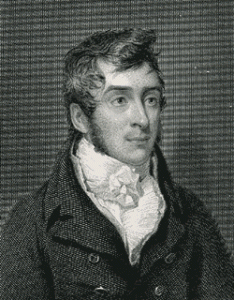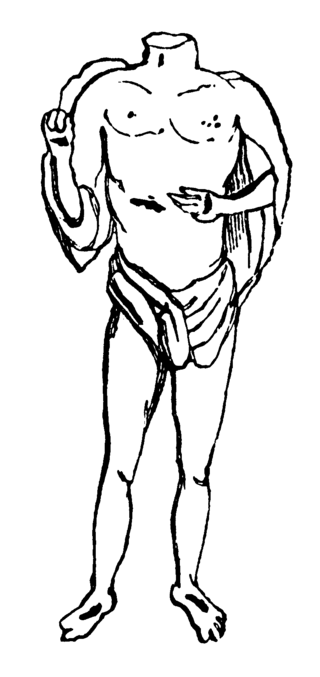Works

- 1072: Guo Xi paints Early Spring and Autumn in the River Valley [2]
- 1078
- Unknown artist sculpts Bishamonten statue in Hōryū-ji
- Tympanum of Santiago de Compostela Cathedral in Galicia (Spain) sculpted
| |||
|---|---|---|---|
| +... |
| 1060s .1070s in art. 1080s |
| Art timeline |
The decade of the 1070s in art involved some significant events.


Harold Godwinson, also called Harold II, was the last crowned Anglo-Saxon English king. Harold reigned from 6 January 1066 until his death at the Battle of Hastings on 14 October 1066, the decisive battle of the Norman Conquest. Harold's death marked the end of Anglo-Saxon rule over England. He was succeeded by William the Conqueror.

Year 1077 (MLXXVII) was a common year starting on Sunday of the Julian calendar.

The Bayeux Tapestry is an embroidered cloth nearly 70 metres long and 50 centimetres tall that depicts the events leading up to the Norman Conquest of England in 1066, led by William, Duke of Normandy challenging Harold II, King of England, and culminating in the Battle of Hastings. It is thought to date to the 11th century, within a few years of the battle. Now widely accepted to have been made in England, perhaps as a gift for William, it tells the story from the point of view of the conquering Normans and for centuries has been preserved in Normandy.

Tapestry is a form of textile art, traditionally woven by hand on a loom. Normally it is used to create images rather than patterns. Tapestry is relatively fragile, and difficult to make, so most historical pieces are intended to hang vertically on a wall, or sometimes horizontally over a piece of furniture such as a table or bed. Some periods made smaller pieces, often long and narrow and used as borders for other textiles. Most weavers use a natural warp thread, such as wool, linen, or cotton. The weft threads are usually wool or cotton but may include silk, gold, silver, or other alternatives.

The Quaker Tapestry consists of 77 panels illustrating the history of Quakerism from the 17th century to the present day. The idea of Quaker Anne Wynn-Wilson, the tapestry has a permanent home at the Friends Meeting House at Kendal, Cumbria, England.

Odo of Bayeux was Bishop of Bayeux in Normandy and was also made Earl of Kent in England following the Norman Conquest. He was the maternal half-brother of duke, and later king, William the Conqueror, and was, for a time, William's primary administrator in the Kingdom of England, although he was eventually tried for defrauding William's government. It is likely Odo commissioned the Bayeux Tapestry, a large tableau of the Norman Conquest, perhaps to present to his brother William. He later fell out with his brother over Odo's support for military adventures in Italy. William, on his deathbed, freed Odo. Odo died in Palermo Sicily on the way to crusade.

Charles Alfred Stothard was an English antiquarian draughtsman, with a special interest in monumental effigies.

Bayeux is a commune in the Calvados department in Normandy in northwestern France.

Tapestry is the second studio album by the American singer-songwriter Carole King. Produced by Lou Adler, it was released on February 10, 1971, by Ode Records. The album's lead singles, "It's Too Late" and "I Feel the Earth Move", spent five weeks at number one on both the Billboard Hot 100 and Easy Listening charts.

Dom Bernard de Montfaucon, O.S.B. was a French Benedictine monk of the Congregation of Saint Maur. He was an astute scholar who founded the discipline of palaeography, as well as being an editor of works of the Fathers of the Church. He is regarded as one of the founders of the modern discipline of archaeology.

The Diocese of Bayeux and Lisieux is a Latin Church diocese of the Catholic Church in France. It is coextensive with the Department of Calvados and is a suffragan to the Archdiocese of Rouen, also in Normandy.

Bayeux Cathedral, also known as Cathedral of Our Lady of Bayeux, is a Roman Catholic church located in the town of Bayeux in Normandy, France. A national monument, it is the seat of the Bishop of Bayeux and Lisieux and was probably the original home of the Bayeux Tapestry, still preserved nearby. The cathedral is in the Norman-Romanesque architectural tradition.

The Överhogdal tapestries are a group of extraordinarily well-preserved textiles dating from the late Viking Age or the Early Middle Ages that were discovered in the village of Överhogdal in Härjedalen, Sweden.
Events from the 1080s in England.
Events from the 1070s in England.

The Battle of Prestonpans Tapestry 1745, or simply the Prestonpans Tapestry, is a large embroidery created in 2010 in Prestonpans, East Lothian, Scotland. It depicts the events before, during and after the Battle of Prestonpans on 21 September 1745, when Bonnie Prince Charlie's Jacobite forces triumphed over the Hanoverian Army led by Sir John Cope. The design, size and style were inspired by the Bayeux Tapestry.

The Tapestry of Creation or Girona Tapestry is a Romanesque panel of needlework from the 11th century, housed in the Museum of the Cathedral of Girona, Catalonia, Spain. Measuring 3.65 m × 4.70 m of wool and linen, contemporary scholars are still debating its patronage and intended function in the Church. It is organized in concentric circles surrounded by a border depicting a series of theological scenes related with the Christian creation myth as well as a description of the yearly calendar. The righthand border and bottom third of the fabric is lost, but it is believed that the missing sections held a continuation of the months as well as a space describing the discovery of the True Cross.

The Bayeux Tapestry tituli are Medieval Latin captions that are embroidered on the Bayeux Tapestry and describe scenes portrayed on the tapestry. These depict events leading up to the Norman conquest of England concerning William, Duke of Normandy, and Harold, Earl of Wessex, later King of England, and culminating in the Battle of Hastings.

Smart Lethieullier was an English antiquary.

Elizabeth Wardle (1834–1902) was an English embroiderer. In 1857 she married the silk dyer Thomas Wardle, a distant cousin. Thomas was later knighted for his services to the silk industry.